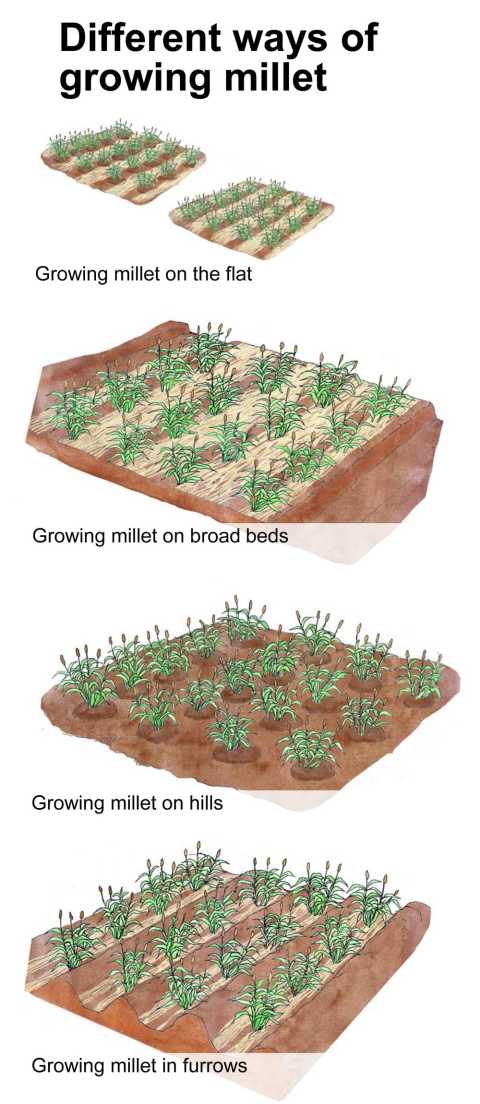Sowing and proper field establishment


Short-duration cultivars are sown early after the fi rst rains of the season, and preparation is limited to a light hoeing. In contrast, long-duration cultivars are sown later and land preparation is usually done more thoroughly. Any hard pans in the soil or other forms of soil compaction must be broken to prevent subsequent root growth restriction. Most farmers still prepare the seedbed by ploughing the land and harrowing it to a fi ne tilth. This land preparation ensures that all the volunteer crops and residues from previous cereal crops are properly buried as part of the pest and disease management strategy. But it exposes the soil to sun, wind and rain, and may result in soil erosion and loss of soil moisture. Notill or conservation-tillage for soil preparation for millet can be successful and is desirable especially on highly erodible land or clayey soils. It also has the advantage of better seed depth control, as the soil stays fi rmer. Crop residues or biomass from a previous green manure crop may be left on the soil surface to build a mulch cover. Millet may then be sown in rows into this mulch.
Sowing can be done on the flat, on hills, on ridges, in furrows, in Zai pits or on raised beds. Raised beds and ridges are especially important, if the soils are poorly drained. In some areas farmers broadcast the seeds along planting rows and then cover them lightly with soil.
The better the growing conditions, the higher the ideal plant density. On sandy soils, wider row spacing may be better, since it will allow individual plants to develop more lateral roots. In drier areas and on light soils millet is sometimes sown in furrows or pits/holes to harvest rain water and improve access to soil moisture.
Row distance for pearl millet can range from 45 cm to 200 cm, depending on whether the crop is grown alone, or whether it is intercropped. In-row spacing can range from 10 to 45 cm. While wide row distances allow use of machinery for weed control also, small row distances will result in better and earlier ground cover by millet and will thus suppress weeds better.
The common seed rate is around 5 kg per hectare, but depending on the plant density, seed rates can vary from 2 kg per hectare to as much as 20 kg per hectare, if several seeds are sown per hole. The seeds should be sown into a shallow (as pearl millet seeds are small), fi rm, mellow and moist seedbed, to obtain good contact between the seeds and the soil, and ensure good field establishment.
Email: Editor@agricinafrica.com

Comments
Post a Comment